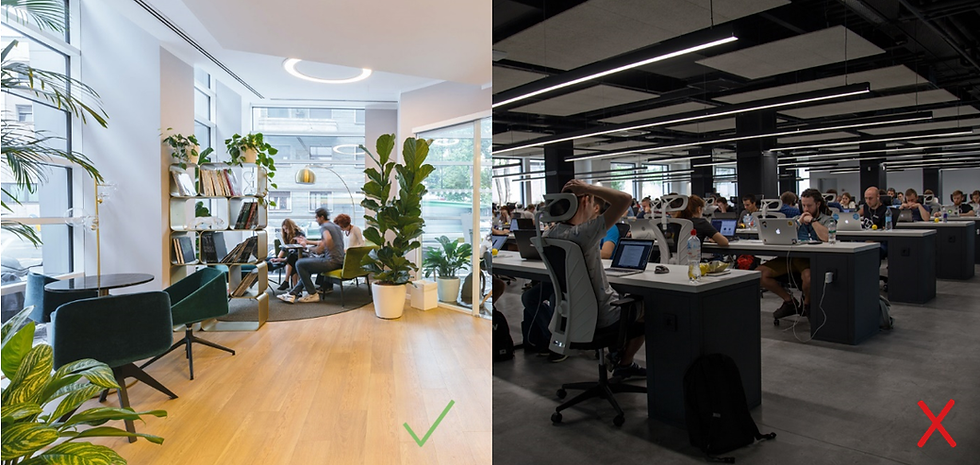Lighting plays a crucial role in our daily lives, influencing everything such as our mood, energy, health and productivity. However, not all light is equal. Understanding the difference between good light and bad light can significantly impact your overall well-being.

What is Good Light?
Good light is daylight or artificial lighting that compensates for the lack of daylight. This type of light is characterized by its brightness, colour temperature, and ability to simulate the natural changes in light throughout the day.
The benefits of good light
Exposure to good light helps regulate your circadian rhythm, the natural biological clock that dictates your sleep-wake cycle. As a result, you experience less fatigue, a boost in energy levels and mood and increased productivity
What is Bad Light?
Bad light refers to artificial lighting that is either too dim during the day, too bright in the evening and night or of poor quality. This type of lighting can have a negative effect on your health and well-being.
The negative effects of bad light
Insufficient light during the day or overly bright lighting during the night can cause several negative effects such as: eye strain, disrupted sleep patterns, negative impacts on health and on mood, such as depression and anxiety, leading to low energy levels.
Creating a good light environment
To harness the benefits of good light, consider the following tips:
Spend at least two hours outside daily, with at least half an hour in the morning.
When indoors for extended periods, stay within one meter of a window. After every 20 minutes of screen time, get up and look at the sky for 20 seconds.
Install electric good light that compensates for the lack of daylight from sunrise to sunset, ensuring you receive at least 500 lux in your eyes during the daytime.
Aim to keep lighting below 10 lux three hours before bedtime by avoiding bright lights and setting your screen to night mode. At night, keep lighting below 1 lux.

Comments